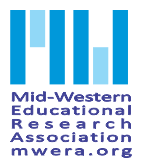Abstract
Formative instructional practices (FIP) are the formal and informal ways that teachers and students gather and respond to evidence of student learning. Although they might have been practicing formative instruction on a daily basis, many teachers rarely thought about how formative instructional practice features were already a part of their work. Teachers often displayed content standards, informed students of learning targets, and maintained learning records, but they may not have consistently analyzed records of student learning to make instructional decisions. Both novice educators and educators who already have strong classroom management and instructional skills are likely to benefit from professional learning around practices that encourage more student ownership of learning. In order to design a content relevant FIP PD program, it was critical to have an understanding of what teachers knew about formative instructional practices, and where their strength and weakness were. This study aimed to initiate these processes by asking, “What is educators’ baseline knowledge about FIP as measured by the FIP Knowledge Inventory?” The results of 2,528 educators on a FIP Knowledge Inventory showed an average of 61.84% correct responses or 15.46 points out of a possible 25 points. Item analysis indicated that teachers were weaker in two areas than they were in other principles of FIP: 1) providing effective feedback to students, and 2) promoting student ownership of their learning. This has implications for future teacher PD design and purposeful practices to transform knowledge to classroom instruction.
Recommended Citation
Lang, Xin and Collins, Linda
(2019)
"Planning Professional Development: What Educators Know about Formative Instructional Practices,"
Mid-Western Educational Researcher: Vol. 31:
Iss.
4, Article 4.
Available at:
https://scholarworks.bgsu.edu/mwer/vol31/iss4/4


